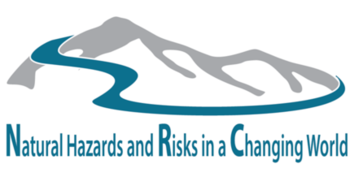Natural Hazards and Risks in a Changing World
A graduate research school with the University of Potsdam, Potsdam Institute for Climate Impact Research (PIK), Helmholtz Centre Potsdam German Research Centre for Geosciences GFZ. The central goal of NatRiskChange is to pursue the development of methods to improve hazard and risk analysis and quantification based on the transient, non-stationary nature of hazards and risks in response to changing natural and anthropogenically altered components of the Earth system. Key scientific aims are the development, testing, and pilot application of studies on identification, quantification (mechanisms) and prediction of transient natural hazards and associated risks.
PhD-Project:
- Q9: The effect of meteorological hazards on dynamics of vulnerability
Vulnerability is a complex concept with several dimensions (e.g., technical, social, economic, environmental) and cannot be considered as stationary. An economic trend (increase in wealth) accompanied by, e.g., an increase in infrastructure exposed to hazards is an example for an externally driven mechanism. One expected consequence is an increase in exposure, which can occur without any change in average vulnerability. However, the increase in wealth may also lead to a change in coping capacities, eventually affecting the mean vulnerability. The occurrence of hazards can itself trigger a change in vulnerability, e.g. directly by destroying those pars of exposed items which are highly vulnerable and are, for example, less vulnerable after repair. Alternatively, a change in vulnerability can indirectly arise from a hazard-induced change in human behaviour (DKKV 2015; Kox & Thieken 2017; Aerts et al. 2018).
In Q9, we start with available data on loss-ratios to wind and hail in Germany and acquire further data on vulnerability and exposure during the course of the project. In addition to the change in vulnerability caused by damage of previous events, we investigate the effect of official warnings issued by the German Weather Service (DWD) on damage. This addresses a potential change in exposure. This project thus investigates and quantifies contributions to the meteorological hazard-induced and warning-induced change in vulnerability and exposure based on data for hazards, impacts and warnings.
Based on loss-ratio data from insurance companies in Germany, we investigate the damage caused by wind storms with a focus on the effect of antecedent events. This data is available from 1997 to 2016. Starting with an explorative data analysis, we use generalized linear and additive models to quantify the effect of antecedent events and separate it from the effects of hazard intensity. Effects from wind storms will be compared to those from other hazards. In a second step, we use the same modelling strategy and investigate the effect of warnings on damage due to a reduction in exposure. DWD data on weather warnings is available since 2003. A posteriori, we can classify the warnings as hits or false alarms and use this as additional information to our model. The latter can be used to address the effect of a series of false alarms to the reduction of exposure by taking precautionary measures.
An assessment of hazard impacts on vulnerability is the main project result, accompanied by a quantification of the effect of past hazards on loss-ratios due to wind storms and other hazard types on a regional basis, as well as the effect of warnings and series of false alarms on vulnerability and exposure.
Publications within this Project:
- M. Fischer, H.W. Rust, U. Ulbrich; 2018: Seasonal Cycle in German Daily Precipitation Extremes, MetZet, 27(1): 3-13, https://doi.org/10.1127/metz/2017/0845.
- M. Fischer, H.W. Rust, U. Ulbrich; 2019: A spatial and seasonal climatology of extreme precipitation return-levels – A case study, Spatial Statistics, https://doi.org/10.1016/j.spasta.2017.11.007.
Other PhD-Projects:
- I1: Natural hazards in a changing climate – What causes the variability? (Thomas Moran)
- I5: Changes in European windstorm characteristics (Christian Passow)
- P6: Linking occurrence probabilities to large scale flow (Jana Ulrich)
- P3: Spatio-temporal response of extreme precipitation to climate change and decadal climate variability (Madlen Peter (geb. Fischer))
- Spatial modeling for rainfall extremes on different time scales (Oscar Jurado)
- Droughts in a changing climate (Yan Li)
